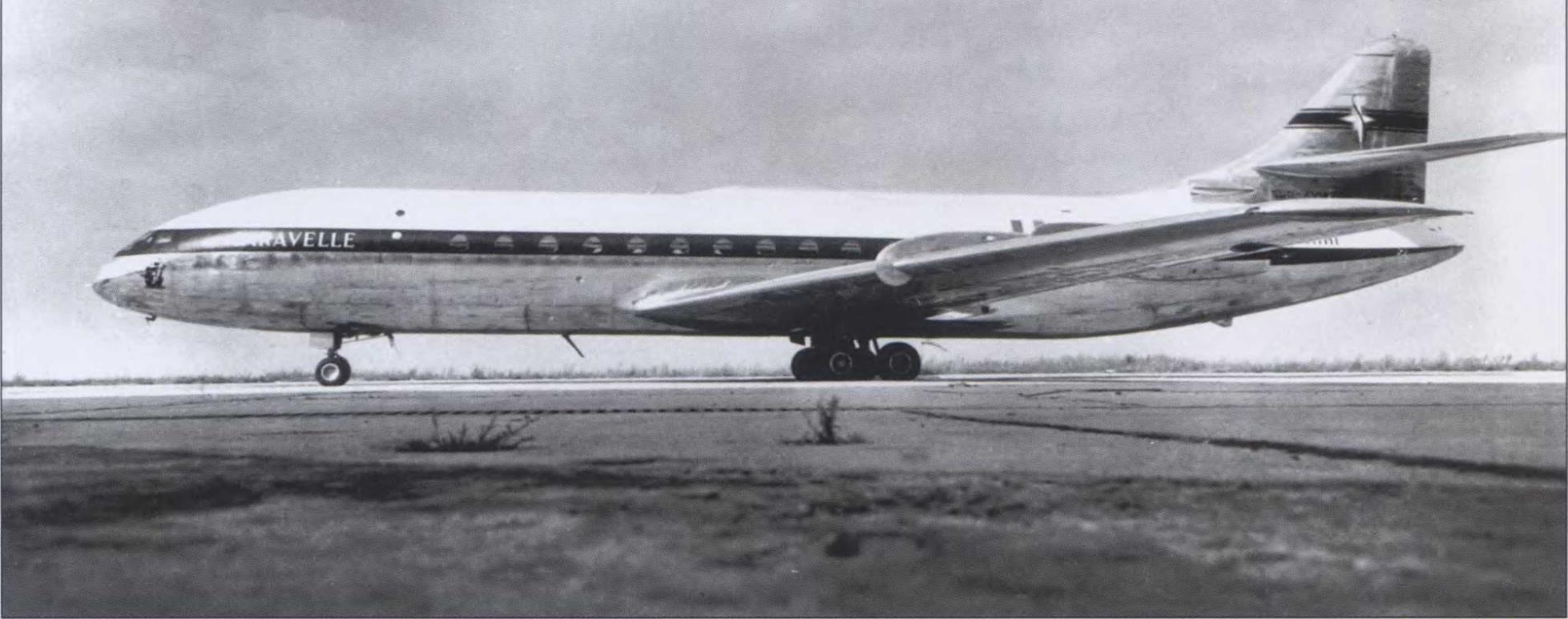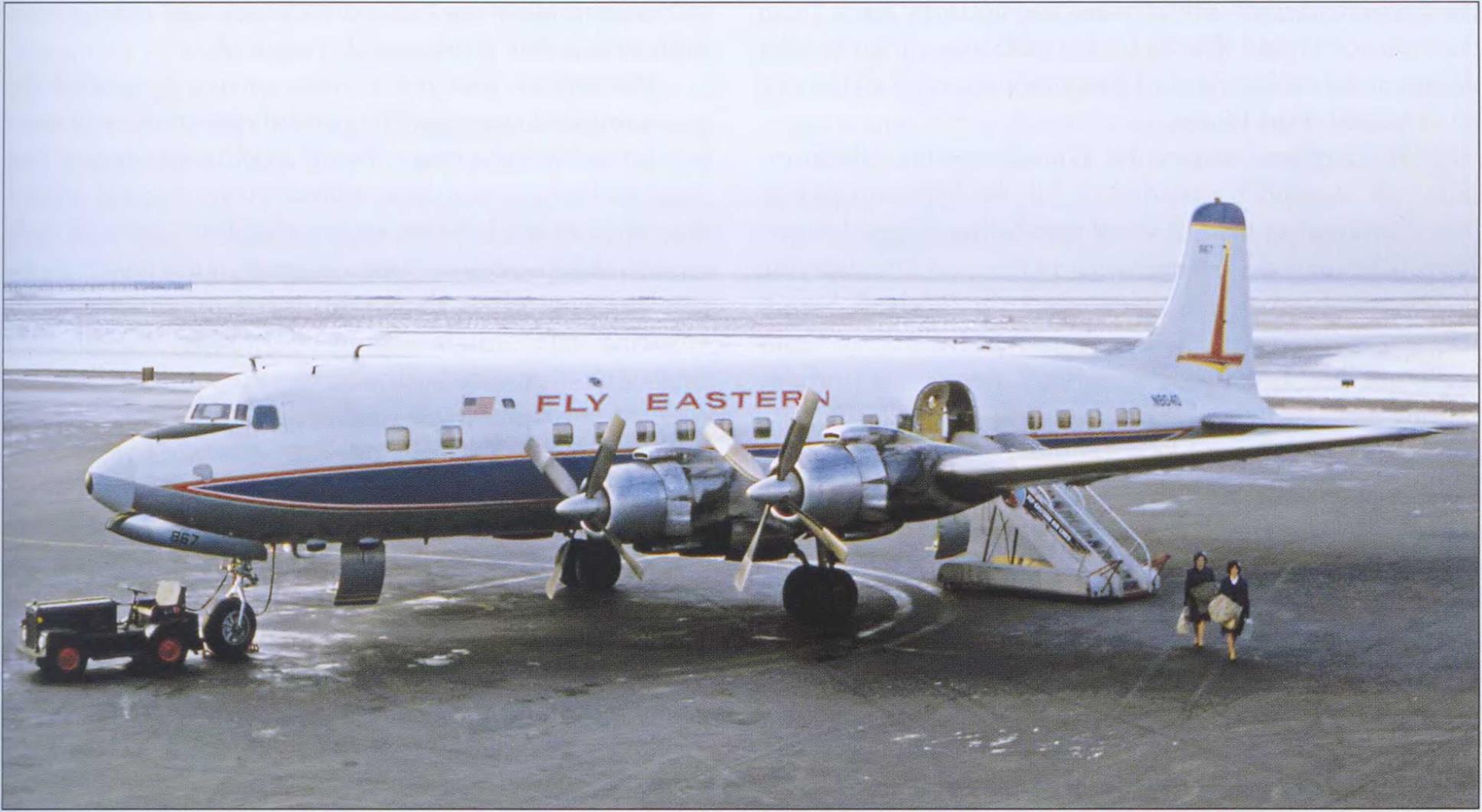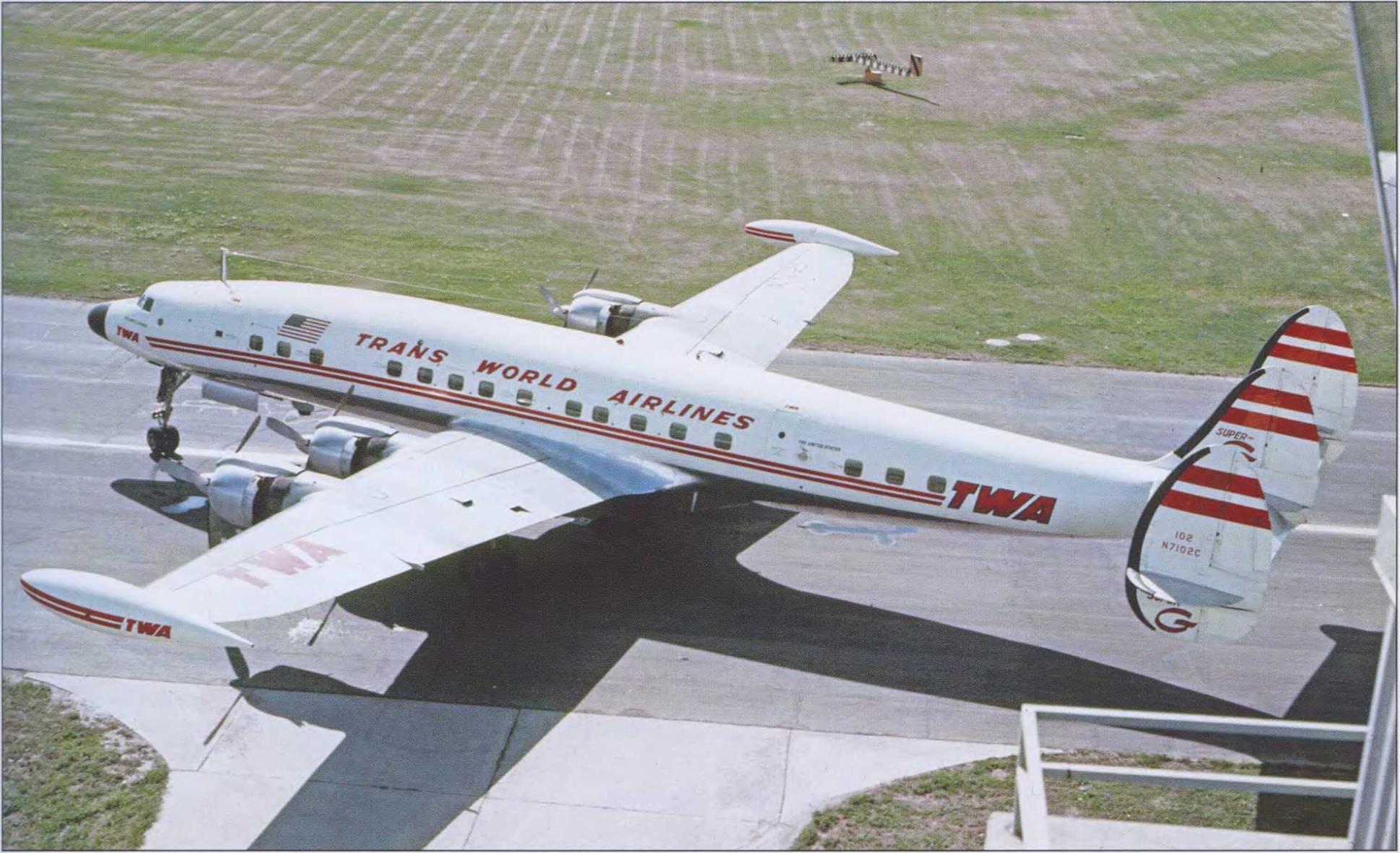SE 210 Caravelle I, I A, and III
There can only be one “first” of anything, and for rear-engined jet airliners, the Sud-Est SE 210 Caravelle proudly holds that honor. French aircraft manufacturers were identified by region, Nord (North), Sud – Ouest (Southwest), or Sud-Est (Southeast). Named for the small, swift, twin-masted sixteenth-century sailing ships that also became the aircraft’s official logo, the Caravelle turned heads at the Paris Airshow when revealed to the public for the first time in 1957. However, the airplane’s genesis dates back to the late-1940s when
 |
|
|
Although an early Constellation operator, Eastern Air Lines turned to Douglas for a 50-strong fleet of DC-7Bs, which wore several variations of the company’s colors. Two stewardesses are seen departing at the end of their duty day in December 1963 at New York’s Idlewild Airport. Also known as New York International, the airport was officially renamed for slain President John F. Kennedy on Christmas Eve day that year. (Harry Sievers)
|
|
The Connie’s classic lines are handsomely accentuated by wingtip fuel tanks in this overhead view taken at Kansas City. It was TWA’s first airliner to feature two classes of service, with separate entry doors for each cabin section.
(TWA/Jon Proctor Collection)
the French aircraft industry led the country back from the ruins of World War II by formulating a plan for the design and development of a new commercial airliner to be exported worldwide.
This airplane was to be a medium-size, medium – range jet transport intended to fill the apparent gap in new commercial aircraft sized just below larger, longer- range four-engine jetliner designs then on the drawing boards in England, Canada, and the United States. Initially called the X-200 and masterminded by Sud’s brilliant Chief Engineer Pierre Satre, numerous configurations were proposed with the tenth design, or X-210, emerging as the most likely candidate for development. This was a three-engine aircraft called the Tri-Atar, which bore a striking resemblance to another airplane that would later be known as the Boeing 727. By 1951, capitalizing on improvements in jet powerplant technology, a twin-engine version of the X-210 came into focus, and the Caravelle was born.
Sporting twin Rolls-Royce Avon turbojets housed in slim nacelles mounted on the aircraft’s aft fuselage, this new jetliner looked sleek, efficient, and practical, yet stylishly modern at the same time. With the engines at the rear, the Caravelle’s slightly swept wings were left strictly to provide lift at maximum efficiency, giving the aircraft an impressive glide ratio of 19:1—the same as high-performance gliders of the time. The airplane’s landing gear was also suitably short, giving it a low
stance, and allowing full maintenance and ramp service with only a few work stands required.
Passengers enjoyed another major benefit of the rear-mounted engines: The painful roar of exhaust noise was far behind the cabin. From a safety standpoint, fuel lines and associated heat sources were located behind the cabin as well. From an aerodynamic point of view, engine thrust vectors were located much closer to the fuselage centerline than with wing-mounted engines, ensuring safer single-engine operations (should those occasions ever arise). Finally, an integral boarding stair was fitted to the lower fuselage aft of the rear pressure bulkhead, alleviating the need for cumbersome external boarding stairs at smaller airports.
To facilitate the airplane’s development, the French physically grafted the sleek bullet-shaped nose of an existing jet airliner onto the forward barrel section of the Caravelle’s fuselage. That other jetliner just happened to be Britain’s de Havilland DH-106 Comet, recently grounded from a series of tragic inflight accidents (see Chapter Two). Sud purchased two complete nose sections from de Havilland and had them shipped from Hatfield, England, to Sud’s final assembly facility at Toulouse. With the exception of engine pylons and tail surfaces built by Fiat in Genoa, Italy, the rest of the Caravelle’s airframe was manufactured exclusively in France.
The first Caravelle prototype rolled out of Sud’s final assembly building on April 21, 1955, and flew

successfully for the first time one month later. In November of that year, the country’s national airline, Air France, placed an order for 12 Caravelles with 12 options, and the race was on. Certification flight testing was completed in March 1956, and route-proving and system-integration test flights soon began in earnest. One such flight offered a rather graphic demonstration of the aircraft’s impressive single-engine performance when the second prototype flew between Paris and Casablanca on only one engine!
After the two prototypes, the Caravelle I became the first operational aircraft sporting a З-foot fuselage stretch and a new avionics “hump” on the upper aft fuselage. Rolls-Royce Avon 522A engines provided 10,500 pounds of thrust each, and passenger capacity was established at 85 in an all-economy configuration. A slightly upgraded Caravelle 1A model was developed, after which the Caravelle III became the standard, with all earlier airplanes upgraded as Ills. With a wingspan of 112 feet 6 inches and a fuselage length of 105 feet, the new jetliner was perfect for serving smaller outlying country airfields and big city airports alike.
Scandinavian Airlines System became the first airline in the Western world to inaugurate twin-engine pure-jet airliner service when it put the Caravelle III into operation flying from Copenhagen, Denmark, to Beirut, Lebanon, in April 1959. Air France began its Caravelle
service on the Paris-Rome-Athens-Istanbul route the following month. Swissair and Air Algerie soon followed, flying the sleek twinjets on short – and medium- range routes throughout Europe and North Africa.
Other Caravelle III operators included Finnair, Alitalia, and Sabena in Europe, and Varig of Brazil in the Western hemisphere. A total of 111 Caravelle I, I A, and III models were built, while the total number of all Caravelles, including larger turbofan-powered versions, numbered 282 aircraft. This was the largest single production run of any European-built airliner at the time.












